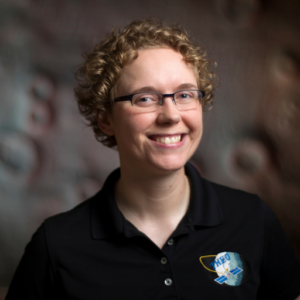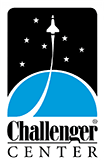Challenger Center a Launching Pad for STEM Careers
Challenger Center has been inspiring students to pursue STEM (Science, Technology, Engineering and Math) careers since the organization was founded in 1986.
Challenger Center is a non-profit education organization created by the families of the crew of the space shuttle Challenger. Its global network of Challenger Learning Centers use space-themed simulated learning and role-playing strategies to help students bring their classroom studies to life and cultivate skills needed for future success. Several participants have gone on to careers in space exploration and advanced technology and engineering.
France Jackson

Dr. France Jackson excelled in science and math from a young age, but she credits her experiences at the Challenger Learning Center near her hometown in South Carolina with sparking her determination to have a STEM career. Jackson was able to go on Challenger Center missions in both elementary and middle school, and attended summer camp during middle school as well.
Jackson, who is a User Experience Researcher for Intel Corporation, thinks it’s vital to have Challenger Learning Centers all over the country. “I think exposure or the lack thereof is one of the major reasons we don’t see more people interested in STEM, particularly girls and minorities. People can’t aspire to be something they have never heard of or don’t know exists. We should expose kids to STEM early, often and in many different forms,” she said.
That geographic diversity can also be a driver of other forms of diversity. “If you don’t show a girl early that it is ok to be interested in STEM and nurture that interest she may think she is different, she may suppress the interest and it will die,” Jackson said. “I also think It is important to expose kids to professionals in STEM careers early on. Let them see people that look like them that are doing jobs they may have never heard of. I don’t think they have this problem in places like Silicon Valley. Kids are exposed to all kinds of STEM professionals, entrepreneurs, and startup owners. Their parents may work in STEM, their friend’s parents, or even someone from their church. It’s all around them. Here in South Carolina, we have to work a little harder to make sure our children are exposed.”
Cameron McCarty

Cameron McCarty attended Challenger programs starting in 3rd grade, and went on to complete over 15 missions. While McCarty knew that a STEM career was the path he wanted to follow after attending several lectures by astronauts at the Challenger Learning Center, he points out that many career paths can benefit from the missions. “So many critical thinking skills are taught through STEM methods. Even if you never enter a STEM field or pursue a STEM degree, everyone can benefit from these core critical thinking skills,” McCarty said.
It’s perhaps no coincidence that McCarty, who is currently the Engineering Camera Uplink Lead for the Opportunity Mars Rover, always signed up to be on the Probe team on his missions. But his best advice for kids today who are interested in STEM careers isn’t about success. “Don’t be afraid to fail, and when you do fail brilliantly. Failure is the best way we learn and can improve,” McCarty said.
Tess Caswell

When she was just 12 years old, Tess Caswell started volunteering during the construction phase of the Challenger Learning Center near her hometown in Alaska. Now a postdoctoral research scientist with the Lamont-Doherty Earth Observatory at Columbia University, Caswell says the Challenger Center had a critical influence on her career choice. “I had the opportunity to meet two astronauts: Pete Conrad, who walked on the Moon during Apollo 12, and Joe Allen, who flew two shuttle missions. They gave me advice on becoming an astronaut that influenced my trajectory for years to come.” (See what she did there?)
Caswell got to participate in her first Challenger Center mission when she was 14, and recalls it vividly. “What I remember most from my first Challenger Center mission was the way it built our group into a team. When we first started, everyone was focused on their own priorities at their console in MCC or station onboard the spacecraft. By the end, we were all working as a team to overcome challenges and accomplish the mission.”
Letting elementary and middle school students participate in hands-on missions is the perfect introduction to the rigorous but inspiring work in science and technology, Caswell said. “STEM education in the higher grades can be challenging, so equipping all students with the right skillset to tackle intimidating subjects like math and physics before they become daunting is crucial.”
Ways to Support the Challenger Center
A portion of the proceeds from the NaNoWriMo Writing Tools bundle goes directly to benefit Challenger Center. This bundle, put together by Kevin J. Anderson, is an impressive collection of a dozen books on writing that will be inspirational, helpful, maybe even provocative. You can get all of the books for as little as $15. This bundle is only available through the end of November 2018, but you can always donate directly to Challenger Center!


